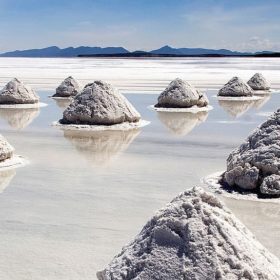GCL cuts granular silicon production costs by 15%
GCL Technology cut granular silicon production costs by 15% to CNY 28.17 ($3.87)/kg in the fourth quarter of 2024, down from CNY 33.18 in the previous quarter.
All-perovskite tandem solar cell based on wide bandgap perovskite achieves 29.1% efficiency
An international team researching wide bandgap perovskite films announced an effective technique to control the crystal orientation without compromising charge transport. The new approach was demonstrated in an all-perovskite tandem solar cell with an open-circuit voltage of 2.21 V and certified power conversion efficiency of 29.1%,
The Hydrogen Stream: Algeria, EU nations plan Southern Hydrogen Corridor
Algeria, Austria, Germany, Italy, and Tunisia have agreed to develop the Southern Hydrogen Corridor linking North Africa and Europe, while Sungrow Hydrogen has signed a deal to supply electrolysis gear for ACME’s 320 MW green ammonia project in Oman.
Chinese PV Industry Brief: JinkoSolar, TBEA report lower profits
Five major Chinese PV manufacturers issued profit warnings this week.
Chinese PV Industry Brief: Longi issues net loss warning for 2024
Longi has issued a profit warning for 2024, forecasting a net loss of up to $1.11 billion – a sharp decline from last year’s profit of $1.42 billion.
China begins building first GW-scale residential VPP
China is building its first gigawatt-scale residential virtual power plant (VPP) in Jiangsu province. The project will connect millions of high-power household appliances to a cloud-based energy pool to improve grid stability and boost renewable energy use.
A copper-bottomed answer to solar’s silver dependence
The solar industry has dragged its heels on the issue of silver-dependence for cell metallization, but China’s Jiangsu Xianghuan Technology (JXTC) is moving into commercial production with a copper plating process that overcomes many of the challenges that have limited interest from cell manufacturers.
Bolivia’s YLB signs lithium deals with Russian, Chinese companies
The agreements provide for the installation of carbonate industrial plants in the department of Potosí, which will receive royalties and investments of around $2 billion.
China’s CGN New Energy announces winning bidders in 10 GWh BESS tender
CGN New Energy has selected seven winners from 50 bidders in its 10 GWh battery energy storage system (BESS) tender, with the lowest bid at CNY 0.458/Wh ($63/kWh).
US bans five Chinese PV firms under Uyghur Forced Labor Prevention Act
Under the Uyghur Forced Labor Prevention Act (UFLPA), the US authorities have banned five Chinese companies from providing products and services in the United States.









